Panasonic TZ95 Review
Panasonic TZ95 Review
A good travel camera with long reach and 4K video
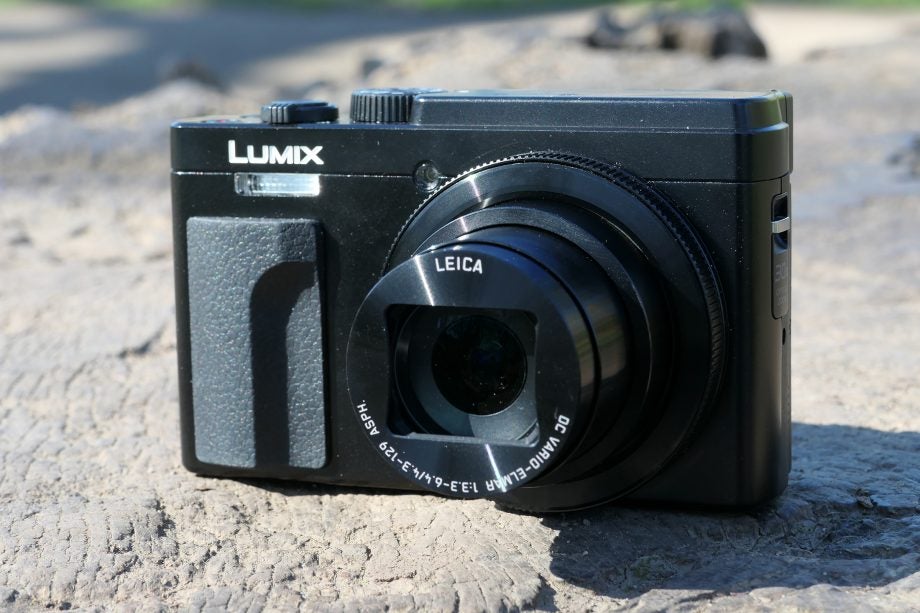
Verdict
If you’re after a well-rounded compact camera that offers plenty in a small package, the TZ95 is a good option. Zooming capability and 4K Photo are the standout features, but low-light shooting leaves a lot to be desired.
Pros
- Long zoom
- Touch-sensitive tilting screen
- 4K Photo
- Manual control
Cons
- Small sensor
- Small viewfinder
- Not great in low light
Key Specifications
- Review Price: £399
- 30x optical zoom
- Shoot 4K video at 30fps
- Wi-Fi and Bluetooth
- 3-inch, 1040k-dot, tilting screen
- 20.3-megapixel 1/2.3-inch sensor
- 10fps continuous shooting
What is the Panasonic Lumix TZ95?
The moniker “TZ” (travel zoom) shows that Panasonic’s latest high-zoom compact has been built for travelling photographers. These popular cameras have survived the smartphone onslaught by offering optics that no smartphone can (yet) muster.
The TZ95 is the latest in a long line of travel zooms from Panasonic, and gives you 30x optical zoom to play with. That’s 24-720mm in 35mm terms, which should make it well-suited to shooting everything from landscapes to faraway subjects (and everything in-between). All from something that fits in your pocket.
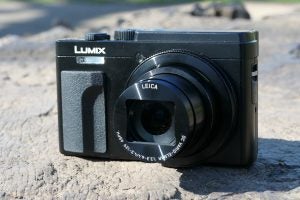
Of course, there’s always a trade-off, and here it’s the size of the sensor. While other compact cameras on the market have upped the ante by packing in ever increasingly large sensors, the TZ95 sticks with what is now a relatively small 20-megapixel 1/2.3-inch chip (in fact, there are some smartphone sensors that are bigger).
This means that it isn’t hugely suited to low light, but for bright and sunny holidays it could well be the perfect pocket powerhouse…
Related: Best compact cameras
Panasonic Lumix TZ95 – Design and features
The Lumix TZ95 follows on from the two-year-old TZ90, but much of it remains exactly the same. That includes the design, which follows the same pocket-friendly and somewhat utilitarian outward appearance. You’ve got everything you’ll need here, but it probably isn’t the most stylish compact camera on the market.
Of course the biggest draw here, the one that will tempt you away from your smartphone, is the 30x optical zoom. With 24-720mm on offer, it’s well suited to travelling situations where you might be faced with a range of different subjects. Push the power on button and you’ll see that the fairly large lens protrudes heftily far from the body, getting even longer as you zoom in.
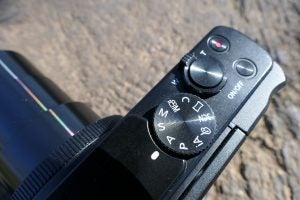
There’s a grip on the front right of the camera to help you keep a good hold of the TZ95, while all of the buttons are gathered on the top right or back right for easy one-handed operation.
On the top is a mode dial for moving between the different exposure modes the camera offers. Enthusiasts will be pleased to note the manual and semi-automatic options here (it also shoots in Raw format), while point-and-shooters are catered for by automatic and scene modes.
That mega-zoom can be controlled by a rocker switch around the shutter-release button, but there’s also a ring around the lens that can be customised to control several different functions depending on your personal preference – zoom could well be assigned to it if you feel so inclined.
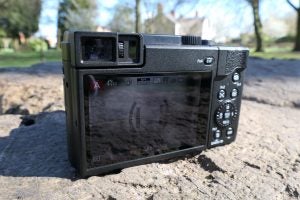
A decent array of buttons adorns the back of the camera. Particularly useful is the Zoom Compose Assist button, which comes into use when shooting at long focal lengths. If your subject wanders out of frame, hold down this button, relocate your subject, release it – et voila, it’s back in the frame.
Other buttons include a quick menu, a playback button and a scroll wheel with directional keys assigned to various functions such as focusing mode, exposure compensation and flash. As we’ve seen before on plenty of other Panasonic models, several buttons are customisable, if you don’t like their default functions.
Since all of this is available on the older Panasonic TZ90 model, you might be left wondering what’s new? Well, the short answer is “not a whole lot”. The TZ95 introduces Wi-Fi and Bluetooth for quick sharing of your shots while on the go.
It isn’t an incredible overhaul, but for travellers wanting to show off their latest destinations on social media, it’s perhaps an important one.
Related: Best travel cameras
Panasonic Lumix TZ95 – Screen and viewfinder
Another benefit of using the TZ95 over your smartphone is the viewfinder and screen combination, which provides different options depending on how you like to shoot.
The electronic viewfinder is on the small side, but it’s usable – particularly in very sunny situations, where bright light might preclude the use of the screen. Of course, there are also folk who just prefer to compose that way.
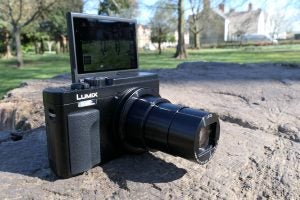
What’s great to see is that you can use Touch Pad AF, something we’ve seen in Panasonic’s compact system cameras. This allows you to touch and drag the focus point around the screen even while shooting through the viewfinder, which is very handy.
Speaking of the screen, it tilts all the way forward, which is great for all those holiday selfies. Being able to tilt up is also useful for framing from low angles. It doesn’t tilt downwards, though, making it difficult to shoot from high above crowds, for example.
Panasonic Lumix TZ95 – Performance
In good lighting situations, autofocus performance is swift and locks onto the correct target. You can either leave the TZ95 to decide on the target for itself, or you can switch to other AF modes such as 1-Area or Pinpoint.
Switching macro focusing on is a good idea if you want to get super-close to your subjects, and can be particularly useful for flowers and detail shots, for example.
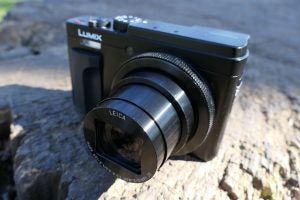
In lower light, the TZ95 can sometimes take a little longer to lock onto the correct subject, with a degree of hunting before it gets there. It’s rare for a false confirmation of focus to be displayed, or for the camera to give up altogether on focusing, however.
It’s fair to say that the TZ95 probably isn’t going to be your first choice for sports or action, but you can shoot at up to 10fps with AF locked onto the first frame, or 5fps if you want the lens to refocus in between each shot.
I found that it can keep up with fairly slow moving and predictable subjects, but it can often be luck rather than judgement as to whether you get the shot for which you were aiming. Using 4K Photo (explained in the next section) generally yields much better results for moving subjects.
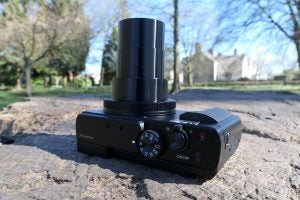
Battery life for the TZ95 is quoted at a fairly decent 380 shots, and you can eek more life out of it by using careful power management (for instance, turning it on and off in-between shots). It should last most shooters a full day, but the fact that it can be powered via USB and charged on the move could be useful for particularly intensive travel days.
Panasonic Lumix TZ95 – Image quality and video
As is so often the case with small-sensor compact cameras such as the TZ95, it puts in its best performance in good, well-balanced light, being a bit more so-so when that light drops.
Still, if you’re packing the TZ95 as your holiday camera, bright light performance might be your primary concern. In such conditions, images display a good overall impression of detail – especially when looking at your pictures at normal printing and web sizes of A4 or below.

Detail is relatively well maintained, even at the furthest reach of the telephoto zoom lens.
You can see some degree of image smoothing/smudging when zooming in at 100%, even when shooting at fairly low ISO settings (such as 80-200), but that’s fairly normal for cameras with such small sensors. Colours are well reproduced, being on the right side of realistic while also showing a decent amount of dynamic range and vibrancy.

Here we can see that the TZ95’s sensor has blown some of the highlights in the high-contrast area at the back of the scene – which is something to watch out for.
When it comes to low light, image quality is fairly disappointing and is best avoided unless absolutely necessary. Visible image smoothing and loss of quality can be seen at fairly middling ISO speeds (by modern standards), such as ISO 1600. Going into even darker conditions and jumping to ISO 3200 or ISO 6400 is definitely best avoided – utilising the flash and sticking to a much lower ISO is the recommendation here.

Images such as this have a good overall impression of detail, but you can see some image smoothing if you look closely.
The zoom lens is what sets this camera apart from your smartphone, and it puts in a reasonably solid performance – again, when shooting in good lighting conditions. At the very far end of the 30x optical zoom, images retain a decent amount of detail, but there’s some smudging to be seen if you examine any closer than around A4 size. The lens performs fairly well throughout the rest of the zoom range, too.
Being able to shoot in 4K gives you the option to create good-quality videos, but perhaps more interestingly, it enables the use of 4K Photo. In essence, you can extract stills (at 8 megapixel) from 4K video clips specifically recorded for this purpose. This can be a great way to capture fleeting moments when the subject is moving a little too fast to otherwise keep up with (kids, pets, sports, and wildlife for example).
The extracted stills don’t stand up to super-close scrutiny, but for sharing online or printing at small sizes, they’re more than adequate.
Why buy the Panasonic Lumix TZ95?
On paper, there’s a lot to like about cameras such as the TZ95. A 30x optical zoom gives you the kind of flexibility that your smartphone definitely can’t do (for now), while having a separate device still makes sense for travelling and day trips when you don’t want to drain your phone’s battery.
Throw in a number of other enticing features, such as a built-in viewfinder, tilting touch-sensitive screen and 4K video and photo and you’ve got a nicely rounded package, made even more so by the addition of Wi-Fi and Bluetooth connectivity.
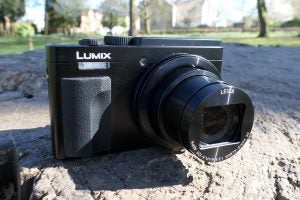
Sadly, though, there’s one big drawback – and, considering we’re talking about a camera, it’s the most important: image quality. Using a small sensor will always have its limitations, and while it’s necessary to facilitate such a large zoom in such a small body, it produces images that are lacking in detail, and in low light you could even go so far as to say that performance is poor.
With smartphones putting in more impressive performances these days, you’re going to have to think long and hard about whether a dedicated camera such as this is right for you. Still, if you don’t have an advanced smartphone, or zooming is what you crave, it remains a good option.
At around £400, it isn’t a super-cheap option, but it also isn’t bank-breaking; it’s relatively competitive in the current market. If Wi-Fi and Bluetooth connectivity doesn’t bother you, the previous generation (the TZ90) is identical in almost every other way and can be picked up for less than £300.
Panasonic Lumix TZ95 – The rivals
Canon SX740
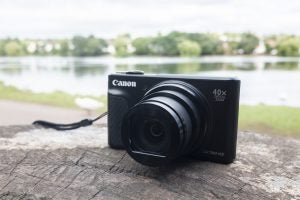
Canon’s latest superzoom compact goes even further than the TZ95, offering a 40x optical zoom. You also get a good range of shooting modes, but notably no possibility to shoot in Raw format. 4K video recording is available, but you don’t get the added (and genuinely) useful functionality of 4K Photo. Available for around £50 less than the TZ95 at the moment, it’s a good option for those less bothered by “extra” features.
Nikon A900
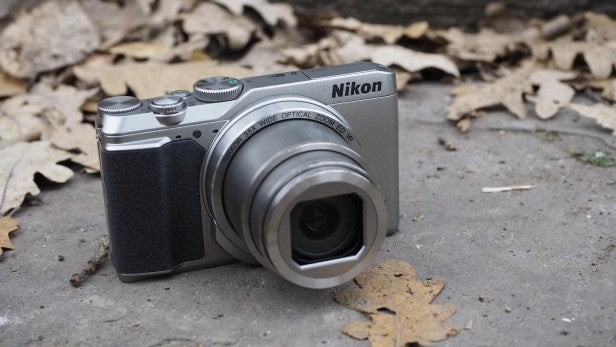
Nikon’s A900 is a little older, but it still offers a lot of bang for your buck – especially since the price has dropped to under £300 since launch. You get a 35x optical zoom, 4K video and SnapBridge connectivity for quickly sharing your shots. The screen tilts, and there’s also a good range of shooting options to choose from. A good choice for those on a slightly more restricted budget.
Trusted Score
Features
| Megapixels (Megapixel) | 20.3 |
| Optical Zoom (Times) | 30 |
| Image Sensor | 20.3 MP 1/2.3-inch High Sensitivity MOS Sensor |
| ISO settings | 80-6400 |
| Video (max res/format) | 4K |
Physical Specifications
| Dimensions Width (Millimeter) | 112.0 |
| Depth (Millimeter) | 68.8 |
| Length (Millimeter) | 41.6 |
| Weight (body only) (Kilogram) | 328 |

